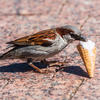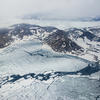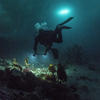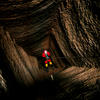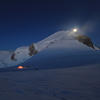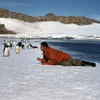You are here
Penguins in a Changing Climate
11.20.2015, by
Antarctica is still home to large populations of Adélie penguins, yet changes to their environment can rapidly render certain areas inhospitable. Since 2010, researchers are closely monitoring the colonies established in the Pointe Géologie Archipelago to detect these modifications and anticipate their impact.
The study presented here is a part of the l'Ammer program (for Adélie Penguins as Monitor of the Marine EnviRonment), supported by the French Polar Institute Paul-Emile Victor (Ipev) and by the World Wide Fund for Nature (WWF).

1
Slideshow mode
For a few years now, the mortality rate of chicks of Adélie penguins has been particularly high in the Pointe Géologie Archipelago. In the 2013-2014 breeding season, the chicks of the 25,000 reproducing couples of the archipelago did not survive.
IPHC / CEBC / IPEV / CNRS Photothèque / Thibaut VERGOZ

2
Slideshow mode
The extension of the sea ice is partly responsible for this phenomenon. It forces adults to travel hundreds of kilometers to access open-sea areas to find food.
IPHC / CEBC / IPEV / CNRS Photothèque / Thibaut VERGOZ

3
Slideshow mode
Changes in the climate, ocean currents and austral winds in particular explain the unusual extension of sea ice in this area.
CNRS Photothèque / Erwan AMICE

4
Slideshow mode
To stay warm, the chicks waiting for the return of their parents huddle in crèches. Nevertheless, many will die of hunger or cold.
IPHC / CEBC / IPEV / CNRS Photothèque / Thibaut VERGOZ

5
Slideshow mode
It is through the monitoring of the penguins during their reproduction cycle that ornithologists (pictured here, Thierry Raclot), were able to detect this abnormal increase in the mortality rate of chicks, and understand the root causes.
IPHC / CEBC / IPEV / CNRS Photothèque / Thibaut VERGOZ

6
Slideshow mode
Researchers hope that this monitoring will help them gain a better understanding of how environmental change impacts penguin populations in order to raise public awareness and call governments to action.
IPHC / CEBC / IPEV / CNRS Photothèque / Thibaut VERGOZ

7
Slideshow mode
Penguin health depends in large part on that of its ecosystem. This seabird also acts as a sentinel animal for other species that may also be affected by environmental change.
IPHC / CEBC / IPEV / CNRS Photothèque / Thibaut VERGOZ

8
Slideshow mode
The researcher Timothée Poupart records the stage of reproduction of the penguins, the presence or absence of chicks, to analyze the capacity of adults to reproduce.
IPHC / CEBC / IPEV / CNRS Photothèque / Thibaut VERGOZ

9
Slideshow mode
In order to better identify specific chicks in the colony, ornithologists Jean-Baptiste Thiébot and Thierry Raclot put temporary marks on them.
IPHC / CEBC / IPEV / CNRS Photothèque / Thibaut VERGOZ

10
Slideshow mode
The weight of adults and that of chicks is the first indicator of the capacity of penguins to find food at sea.
IPHC / CEBC / IPEV / CNRS Photothèque / Thibaut VERGOZ

11
Slideshow mode
Some adult penguins are fitted with an instrument that records their activity as they forage at sea. The researchers then collect these devices when the birds come back to their nest.
IPHC / CEBC / IPEV / CNRS Photothèque / Thibaut VERGOZ

12
Slideshow mode
These devices contain essential data on the places where the bird went and dived, the depth achieved, whether it found food, etc.
IPHC / CEBC / IPEV / CNRS Photothèque / Thibaut VERGOZ

13
Slideshow mode
Results from blood samples provide information on the penguin's stress levels, its biological age, diet, immune system or again on the presence of pollutants in its environment.
IPHC / CEBC / IPEV / CNRS Photothèque / Thibaut VERGOZ

14
Slideshow mode
Despite a limited extension of sea ice between late 2014 and early 2015, the researchers remain vigilant. Abrupt changes could threaten the species in this region. The establishment of a protected marine area would then be part of the protective measures under consideration.
IPHC / CEBC / IPEV / CNRS Photothèque / Thibaut VERGOZ
Explore more
Life
Article
11/26/2025
Article
11/24/2025
Article
09/24/2025
Article
09/01/2025
Article
08/07/2025
ornithology
Article
01/29/2015
Antarctica
Article
09/22/2021
Article
08/08/2019
Slideshow
04/09/2019
Slideshow
01/14/2019
Article
03/23/2023







